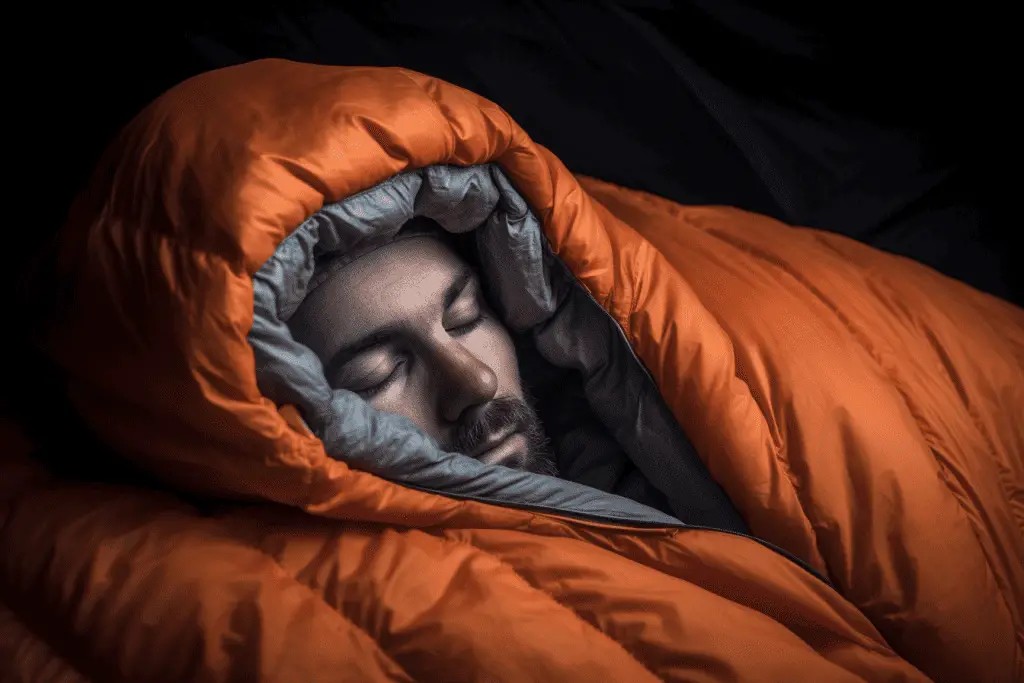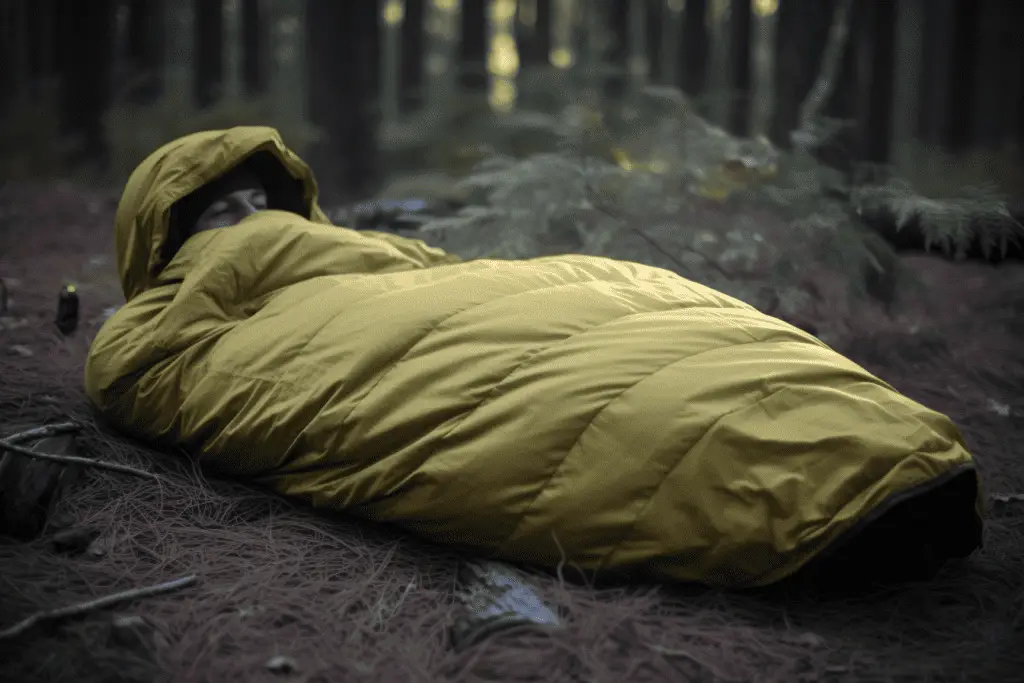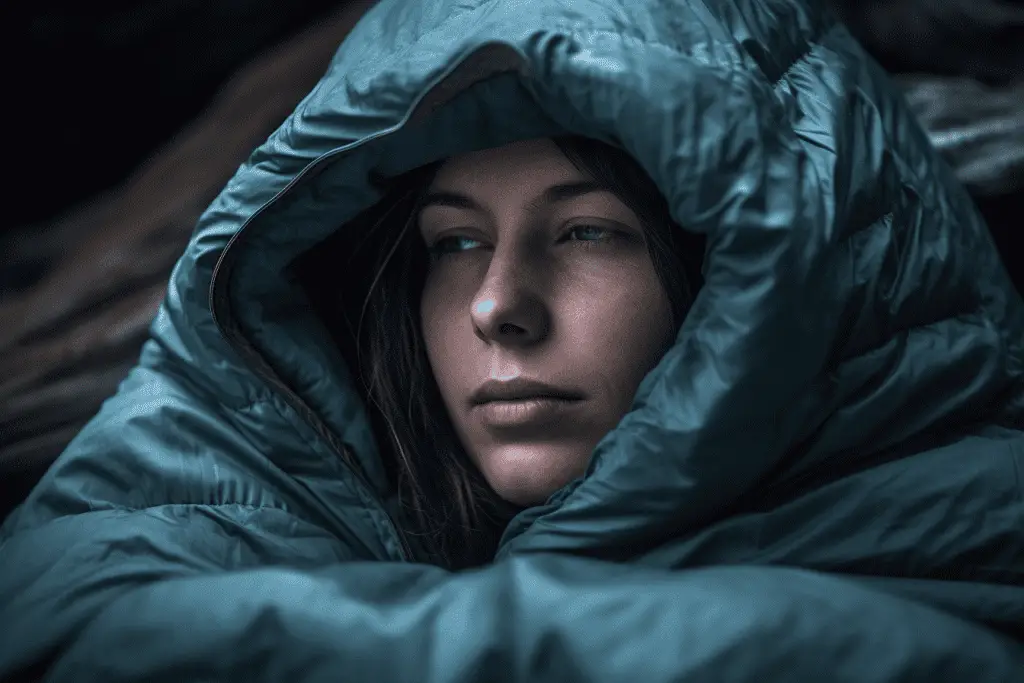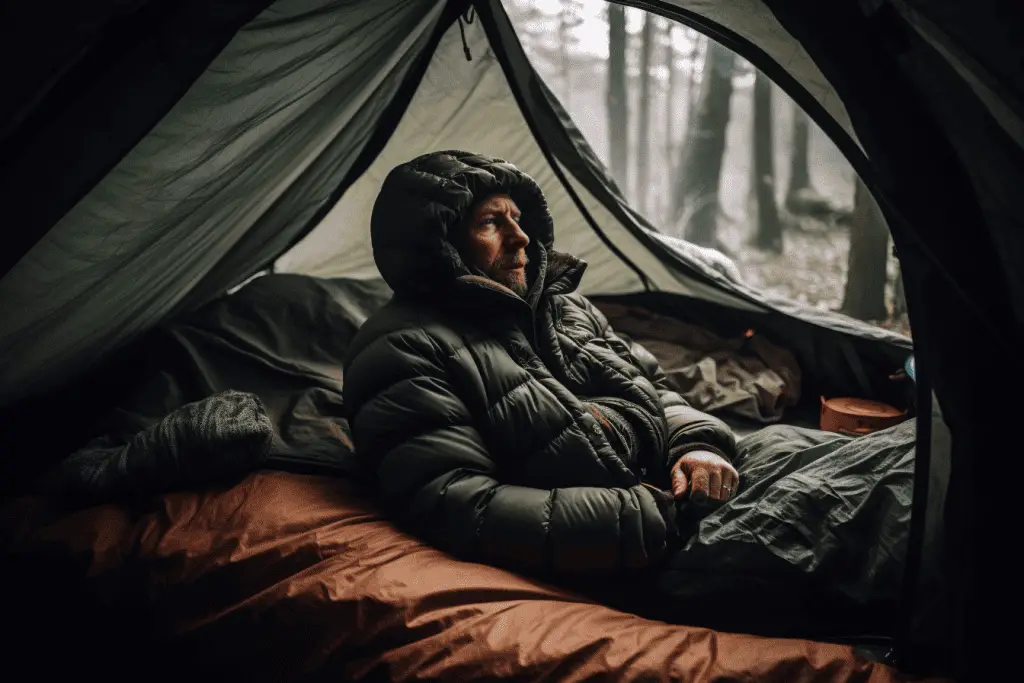Have you ever wondered about the term “sleeping bag temperature ratings”? Well, it’s a crucial piece of information that guides you on what type of sleeping bag is best for your camping trip. Essentially, these ratings are there to help you understand the lowest temperature at which a sleeping bag will keep you warm.
However, these ratings aren’t just random numbers pulled out of a hat. A lot of science and testing goes into determining them. They can vary depending on factors like the type of insulation used, the design of the bag, and even the person using it! By understanding sleeping bag temperature ratings, you’ll be better equipped to choose the right gear for your outdoor adventures, ensuring a good night’s sleep under the stars.

What Do Sleeping Bag Temperature Ratings Mean?
Alright, let’s dive a little deeper into what “temperature rating” actually means. Now, if you look at a sleeping bag’s specifications, you’ll often see a number followed by a degree symbol. This is the sleeping bag temperature rating. It’s a guideline that tells you the lowest temperature at which the bag should keep an average person comfortable. So if you see a rating of 20°F, for example, that sleeping bag is designed to keep you warm down to 20 degrees Fahrenheit.
Here’s where it gets a tad more complex though. Sleeping bag temperature ratings aren’t one-size-fits-all because people feel temperatures differently. Some of us run hot and could sleep comfortably in shorts during a snowstorm, while others are grabbing for extra blankets when it’s 75°F. That’s why these ratings are more like guidelines than exact science.
Additionally, the ratings assume you’re wearing a layer of thermal underwear and using a sleeping pad beneath the bag for insulation from the cold ground. So remember, these ratings are a starting point to guide you, but your personal comfort might require some adjustments!
European Norm Vs International Standards Organization Sleeping Bag Temperature Ratings
Now, let’s chat about EN (European Norm) and ISO (International Standards Organization) ratings, because they play a pivotal role in standardizing sleeping bag temperature ratings. If you’re browsing through sleeping bags, you may notice EN or ISO symbols followed by specific numbers. Don’t worry, it’s not some cryptic outdoor adventurer’s code!
EN and ISO are standards used to test and classify sleeping bags based on their temperature ratings. These standardized testing methods help ensure that no matter who makes the sleeping bag, a 20°F rating means the same thing, providing a level playing field for comparisons. This is super helpful because it allows us to compare apples to apples when we’re shopping.
These standards break down temperature ratings into three main categories: ‘comfort’ (where you’ll have a cozy night’s sleep), ‘lower limit’ (the coldest temperature at which a standard man can sleep in a curled position for eight hours without waking), and ‘extreme’ (the minimum temperature at which a standard woman can remain for six hours without risk of death from hypothermia, although frostbite is still possible). These categories consider the variation in how different people feel comfortable at different temperatures, adding another layer to our understanding of sleeping bag temperature ratings. In a nutshell, these ratings are your friends in making sure you have the right gear for your outdoor adventures!
Comfort Rating vs. Extreme Rating: A Detailed Analysis
So, now that we’ve covered EN and ISO standards, let’s take a closer look at two important ratings: the Comfort Rating and the Extreme Rating. These ratings might sound like they’re on opposite ends of a superhero movie, but they’re both crucial in helping us understand how our sleeping bag will perform under different conditions.
The Comfort Rating is the temperature at which an average woman can sleep comfortably in a relaxed position. Why a woman, you may ask? Well, studies have shown that women often feel colder than men at the same temperatures, so this rating tends to be on the safer, warmer side. If you like to sleep cozy and toasty, pay attention to this rating.

On the other end of the spectrum is the Extreme Rating. This is the absolute minimum temperature at which a sleeping bag could keep an average woman alive for six hours without the risk of hypothermia. Remember, ‘alive’ doesn’t mean ‘comfortable’. At this temperature, you’d likely be very cold, possibly to the point of being at risk for frostbite. The Extreme Rating is not meant to be a target for your camping adventures, but rather a gauge of the sleeping bag’s absolute limit.
Comparing Comfort and Extreme Ratings is like understanding the range of your sleeping bag: from “this is nice, I’m cozy” to “I really wish I was anywhere else right now”. By considering both, you can make a more informed decision about the right sleeping bag for your needs.
Factors Affecting the Performance of Sleeping Bag Temperature Ratings
You might be wondering by now, “Are temperature ratings the only thing I should consider when picking a sleeping bag?” Well, not quite. There are several factors that can affect how a sleeping bag performs at its rated temperature. Let’s delve into those a bit, shall we?
Firstly, the type of insulation in the bag can make a big difference. There are two main types: down and synthetic. Down, typically sourced from ducks or geese, is super lightweight and excellent at trapping heat, but it can lose its insulating properties when wet. Synthetic insulation, on the other hand, is a bit bulkier and less efficient at trapping heat, but maintains its insulating properties better when damp.
Next, your personal metabolism plays a role too. We all know that one friend who’s always cold, right? Everyone’s body generates and retains heat differently, and this can influence how warm you feel in your sleeping bag. That’s why it’s always good to know your own comfort levels in cold conditions.

The gear and clothing you have can also impact performance. A sleeping pad underneath you, providing insulation from the cold ground, is a must. Plus, wearing dry, thermal layers to bed can give an extra boost of warmth.
Last but not least, weather conditions matter. Moisture and wind can make it feel colder than the actual temperature. If you’re camping in humid or windy conditions, you might want a bag with a lower temperature rating just to be safe.
In essence, while sleeping bag temperature ratings provide a solid starting point, your personal comfort will also depend on these other factors. Understanding them helps ensure you’ll be warm and snug on your next outdoor adventure, rather than shivering in the dark!
The Science Behind Sleeping Bag Insulation
Alright, now that we’ve touched on how different factors can impact a sleeping bag’s performance, let’s get into some fun stuff – the science behind sleeping bag insulation. Think of your sleeping bag as a portable version of your cozy bed at home, keeping you warm in the great outdoors. But how does it actually do that?
Well, at the heart of the matter is the principle of trapped air. Whether it’s down or synthetic, the insulation in a sleeping bag works by trapping and holding a layer of air that your body heats up. The more efficiently your sleeping bag traps this warm air, the better it insulates you from the cold.
Down Sleeping Bags
Down insulation is super lightweight and compressible, making it a favorite for long treks where you have to carry your gear. The fluffy clusters of down create lots of tiny air pockets that trap heat, providing excellent insulation. However, if down gets wet, those clusters can clump together, and poof! – there go your air pockets and your insulation.
Synthetic Sleeping Bags
On the other hand, synthetic insulation is made of polyester fibers arranged in complex structures to mimic down’s ability to trap air. It’s usually bulkier and less warm for its weight than down, but it’s also more water-resistant. If it gets wet, it retains its structure and continues to provide some insulation.
Whether you opt for down or synthetic, remember: a sleeping bag doesn’t generate warmth, it preserves your body heat. So the effectiveness of your sleeping bag also depends on factors like your metabolism, clothing, and the environment. The science of sleeping bag insulation is all about maximizing heat retention to keep you comfortable through the night.
How Weather and Sleeping Conditions Impact Temperature Ratings
Okay, let’s now consider the impact of weather and sleeping conditions on temperature ratings. Remember that saying, “There’s no bad weather, just bad gear”? Well, that’s especially true when it comes to sleeping bags. The weather and your sleeping conditions can play a big role in how warm or cold you feel in your sleeping bag, regardless of its temperature rating.
First up, let’s talk moisture. Rain, snow, or high humidity can make it feel colder than the actual temperature, and if your sleeping bag gets wet, it can drastically reduce its insulating capabilities. This is particularly a concern for down bags, which lose much of their insulating power when wet. If you’re heading to a damp or rainy environment, it’s worth considering a synthetic bag or a down bag with a water-resistant treatment.
Next, let’s talk wind. Wind can whisk heat away from your body, making it feel much colder than the actual temperature. A good sleeping bag with a draft tube (that’s a tube of insulation that runs along the zipper to prevent cold air from seeping in) and a well-fitting hood can help protect you from the wind.

Elevation also comes into play. Higher altitudes tend to be colder, so if you’re planning a mountaineering adventure, you might need a bag with a lower temperature rating than you would at sea level.
Lastly, your sleeping conditions matter. Are you sleeping in a tent, or under the stars? Tents can offer a bit of extra warmth by shielding you from wind and trapping a layer of still, warm air.
Remember, the temperature rating of your sleeping bag is a useful guide, but real-world conditions can influence your overall comfort. Being aware of the weather and your sleeping conditions will help you make the right choice for a cozy night’s sleep in the great outdoors.
How Sleeping Bag Designs Influence Temperature Ratings
Design is about more than just aesthetics – especially when it comes to sleeping bags! The design of a sleeping bag can significantly influence its temperature rating and how warm it keeps you. Let’s unwrap some of the ways in which design plays a part in this.
Sleeping Bag Shapes
One of the most noticeable design elements is the shape of the bag. There are generally three shapes: rectangular, semi-rectangular (or barrel-shaped), and mummy.
Rectangular sleeping bags offer plenty of room, but that extra space can also mean more air for your body to heat up, making these bags less efficient at keeping you warm. Mummy bags, with their narrow shoulder and hip width, minimize the amount of air your body has to heat, making them the warmest design. Semi-rectangular bags offer a balance between space and warmth.
Sleeping Bag Insulation Structures
Next up is the type of insulation and how it’s structured. We’ve already talked about down and synthetic insulation, but the way that insulation is organized also matters. For example, some down bags use ‘baffles’ – compartments that hold down in place and prevent it from shifting, which could create cold spots.
Sleeping Bag Shell Materials
The shell material also plays a role. Some sleeping bags come with water-resistant shells to protect the insulation from moisture, which can be a game changer in wet conditions.
Sleeping Bag Design Elements
Then there are the little design elements that can make a big difference. Think draft tubes along zippers to keep cold air from sneaking in, or adjustable hoods and collars that you can cinch tight to trap warmth.
Size and Fit
And let’s not forget the importance of size and fit. A sleeping bag that’s too large for you can leave lots of empty space that your body needs to heat, reducing the bag’s efficiency. On the other hand, a bag that’s too small might compress the insulation, which can also affect its ability to retain heat.
In short, while the temperature rating is a good starting point, the design of your sleeping bag can significantly impact its performance. Knowing how design influences temperature ratings can help you pick the perfect bag for your needs!
Tying It All Together
And there we have it! From understanding the basics of sleeping bag temperature ratings to diving into the nitty-gritty of insulation types and design nuances, we’ve explored the spectrum of what you need to know to choose the right sleeping bag for your adventures. Remember, temperature ratings are a great starting point, but your personal comfort level, the weather conditions, and the design of the bag all play crucial roles in ensuring you get a good night’s sleep in the great outdoors.
In the end, the goal is to equip yourself with gear that matches your outdoor adventure, whether you’re a summer weekend camper or a high-alpine mountaineer. With the knowledge you’ve gained here, you’re now ready to make a more informed decision when purchasing your next sleeping bag.
